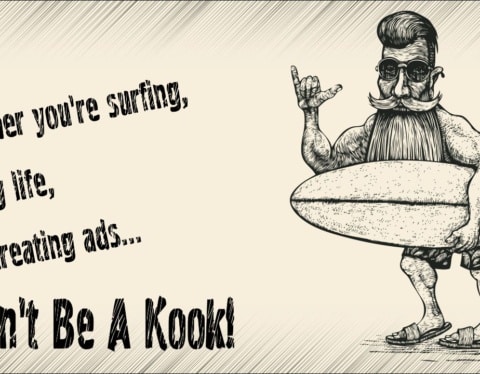Remember the old line “if it ain’t broke, don’t fix it?”
Today’s marketing mantra should be “if it ain’t broke, break it.”
The 21st Century consumer is far savvier than your previous customer. Not only have they become tired and weary of the same old clichés and tactics, they just don’t buy them anymore.
Creating a successful advertising strategy is the ultimate game of understanding human behavior and what consumers find meaningful. Due to the fact that what’s important to your customer today isn’t even on their radar screen tomorrow, you must know your customer and adjust your strategy accordingly.
Every company must be more proactive today as maintaining momentum is crucial to the sales cycle. Before something “breaks”, you need to develop a plan that can take over at a moments notice.
Always have a Plan B.
Better still, have a fully developed Plan B that you are completely confident with. Consumers won’t wait for you to figure out your plan. They’ll just take their checkbook to your competitor. Before Plan A goes south, have Plan B ready to implement.
Once Plan B is developed, here is when you’ll want to implement it:
● When sales momentum slows. I’m not advocating micro-managing your sales on a daily or weekly basis. But when you start to see a trend in your leads, inquiries and close rates declining, it’s time to pull Plan B off the shelf.
How long of a trend should you look for? If your sales decline for 10 to 12 consecutive weeks, implement Plan B immediately.
And while it should go without saying, I’ll say it: Once Plan B is implemented and becomes Plan A, start work right away on developing the new Plan B.
● When no measurable gains have been identified in a 90 day window. If no significant improvement in your sales or lead generation activity is seen for a full quarter, give serious thought to changing direction.
Remember the definition of stupidity: continuing to do the same things while expecting a different result. If consumers haven’t responded to your campaign in 90 days, it’s doubtful they’ll respond after 120.
● When your feedback is “consumers just haven’t figured it out yet.” It’s not the consumers’ job to figure out your campaign. It’s your job to clearly communicate the benefits of why they should give you their money.
Consumers are not patient. With so many choices of where they buy from, they won’t give you a second or third chance to capture their attention.
One final note on this: If the person who created the campaign vigorously defends the strategy even in the midst of flat or declining sales, you might want to start looking elsewhere.
● Whenever you talk “down” to your customer. Arrogance is not limited to large businesses alone. Small companies are guilty of criticizing their customer for not appreciating all they do for them. You need to reverse this equation. You (along with everyone in your organization) need to appreciate every customer you have and every penny they choose to spend with you. While your existence depends on your ability to attract and retain customers, they owe you nothing.
● When you start saying: “All consumers want is the lowest price and nothing else”. No one every wants to over-pay, but few are purely price driven. You can’t blame consumers for not responding to your ads if you haven’t given them a reason to buy from you.
If you claim to be the absolute lowest price and consumers stop shopping with you, maybe it’s time to check your pricing strategy.
But if you’ve failed to communicate why you deliver more value, you can only blame yourself.
Ultimately, the success of your campaign lies in truly understanding who your customer is, what they want, and how they want to be treated.
Ronald A. Heider




